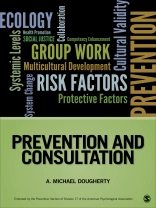This sixth book in the Prevention Practice Kit provides an introduction to evidence-based prevention in psychology. Counselors, psychologists and mental health workers in schools, government agencies, community settings, and in private practice are increasingly expected to select evidence-based practices and programs, and to document the effectiveness of the care they provide. The book addresses the types of questions that may be most pertinent to counselors, psychologists, and other mental health workers who are engaged in prevention and interested in understanding evidence-based programs, including:
- What does it mean to for a program to be evidence-based?
- How should I go about selecting an evidence-based program?
- How do I know if evidence is trustworthy?
- How do I gather evidence to evaluate my own prevention program?
The book introduces several definitions of evidence-based practice and the common components of these definitions. A broad overview of considerations for evaluating the quality and trustworthiness of prevention research is provided along with a discussion of common features of effective prevention programs. Guidance is provided on identifying evidence-based programs, including detailed descriptions of online registries of prevention programs. The book also provides recommendations for determining the need for a prevention program, selecting and implementing an appropriate program, and evaluating outcomes. Throughout the text, examples from research and practice are used to illustrate important concepts, and learning exercises at the end of each chapter augment comprehension and relevance.
This book is part of the Prevention Practice Kit: Action Guides for Mental Health, a collection of eight books each authored by scholars in the specific field of prevention and edited by Dr. Robert K. Conyne and Dr. Arthur M. Horne. The books in the collection conform to the editors′ outline to promote a consistent reading experience. Designed to provide human services practitioners, counselors, psychologists, social workers, instructors, and students with concrete direction for spreading and improving the practice of prevention, the series provides thorough coverage of prevention application including a general overview of prevention, best practices, diversity and cultural relevance, psychoeducational groups, consultation, program development and evaluation, evidence base, and public policy.
This book is endorsed by the Prevention Section of the Society of Counseling Psychology of the American Psychological Association. Fifty percent of all royalties are donated to Division 17 of the APA.
Содержание
Chapter 1. Introduction to Consultation — A. Michael Dougherty
Chapter 2. Background Theory on Consultation
Chapter 3. Research on Consultation
Chapter 4. Consultation and Prevention
Chapter 5. Illustrative Examples
Chapter 6. Summary and Conclusions












